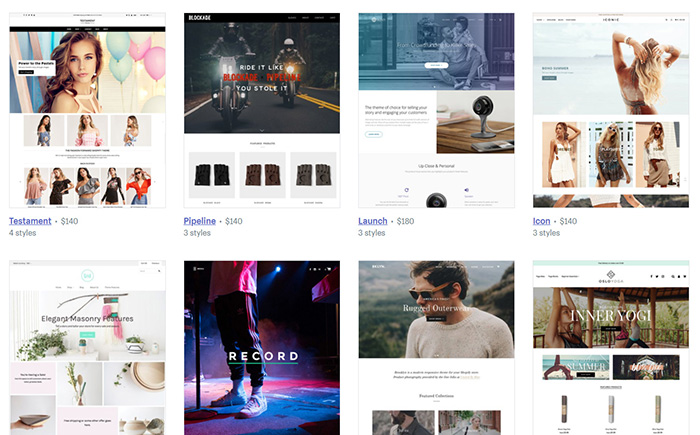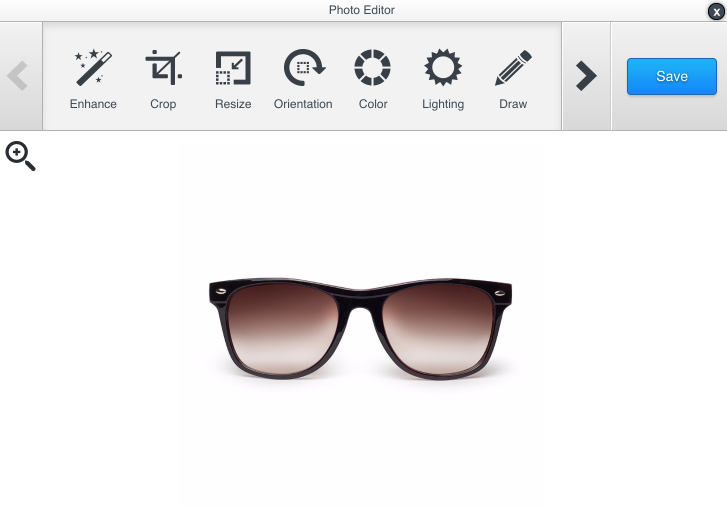“A picture is worth a thousand words.”
This is not an empty saying. In a world where people are constantly spammed with visual stimuli, online and offline, it is even more important to catch their attention in a split second. And this can hardly be achieved with text, as only 16% of readers read a page word-for-word.
Images, however, allow us to capture their content with a glance. By optimising images you use for your online shop, you will benefit from this.
Allow your customers to capture your brand identity, and the nature and style of your products, as soon as they land on your homepage with engaging header images. Then enable them to see the product they are about to buy from various angles and distances, so they know what to expect.
And then deliver on your promises. A cloud-based ERP solution that integrates seamlessly with your Shopify store helps you with that. Try it for free and see for yourself.
So, how do you optimise your Shopify images? Let’s start off with optimising decorative Shopify images, which are images not directly related to your products.
How to Optimise Decorative Images
Almost all Shopify themes include dedicated spaces for decorative images, in particular hero images. These images are very large and prominently displayed on the homepage. Their purpose is to immediately catch the eye of the visitor. They stretch over most of the page, are banners or more than one image in a carousel.

Choose your hero image and other decorative images wisely, as they bring a lot of benefits. For example, they help build your brand and tell the story behind your business. Also use pictures that highlight your Unique Selling Proposition (USP) and the value of your products. Or you use them to boost a specific product or product line. There are so many options – just choose what works best for your shop.
To make your hero image even more engaging, you can add short, catchy copy. For example, announce a special offer or include a prominent Call-To-Action. Beautiful, engaging images that are free for your website are available on a variety of websites. Shopify has its own collection of free stock photos on Burst. Just make sure you don’t violate copyright!
Then, edit and personalise the images using a photo editing software like Photoshop, or any other software that you are familiar with. Again, Shopify provides its own tool in form of the Image Editor. It is useful for basic alterations, but offers a limited breadth and depth of functionality.

To see how you can adjust decorative images to fit best with Shopify themes and changing screen sizes, look at Shopify’s help section. Also, be aware that large images significantly increase page loading time, which easily puts off potential customers. Try to find a balance between image quality and size to increase page loading speed.
How to Optimise Product Images
While decorative images are great from a user experience and branding perspective, they won’t convince shoppers to buy your products.
As online shoppers can’t physically touch the items, it is crucial that they at least see how they look like in reality. This is why product images are so important for an online shop selling physical products.
To enhance the online shopping experience, and facilitate the decision making process, allow your customers to see the product from various angles. So, uploading multiple images is essential. In addition, if you offer different variants, make sure you got at least one picture for each. Often it also makes sense to show the product on a person or in use.
The first image for each product is called the feature image. It should be the best/most attractive because it is shown on the collection page, cart page and checkout page.
But How Do I Get All Those Images?
Hiring a professional to do them will be costly. If your budget does not allow for professional help, take your Shopify images yourself.
You’ll only need a few items to get the perfect shots. Keep in mind clean backgrounds, good lighting and a few other tricks that you can find in the ultimate DIY guide to product photography from Shopify or the secrets for taking great product photos from Out of the Sandbox.
Again, make sure you find the right balance between photo quality, size and quantity. It is important that the pictures are big enough for the user to see the item properly. But page load speed must not be forgotten neither.
Shopify suggests 2048px by 2048px for square images. However, the allowed maximum is 4472px by 4472px, or 20 megapixels.
When planning your product images, strive for consistency. Keep your Shopify image sizes and style consistent and in line with corporate design across your online store. For example, you will usually want images to appear in the same size when they are displayed next to each other on collection pages. To achieve that, you need to use the same width to height ratio for all of them.
And to go the extra mile, you can take a look into more innovative ways of displaying your product, like 360 degree interactive images or product videos. Those are also great for sharing socially and promoting your store!
Don’t Forget About SEO
As already mentioned in our blog post on Shopify SEO, Search Engine Optimisation is essential to increase traffic for your online store. And optimising Shopify images for search engines is an important part.
Make sure the image file names are descriptive and contain the relevant keyword. The same is true for the ALT tags, which are crucial for good search engine rankings. However, do not ‘keyword stuff’ them.
Find a detailed guide on how to upload product images and adding alt tags in the Shopify manual.
Boost Conversions – And Fulfil Those Orders
Filling your online store with appealing images, that present your products to customers, will convince more and more shoppers to buy. And they will resolve all doubt about what the product looks like. Watch your conversion rate increase rapidly – and your sales go through the roof!
But can you keep up with your promises? Can you deliver all those items correctly and on time? Do you really have in stock what you claimed to have on your website?
If you are not sure about keeping up with your Shopify orders while managing all other areas of your business at the same time, you should take a look at implementing Cloud ERP software. Its Shopify integration takes out the hassle of online selling and the software fully supports your business.
Try it for free – no strings attached!


